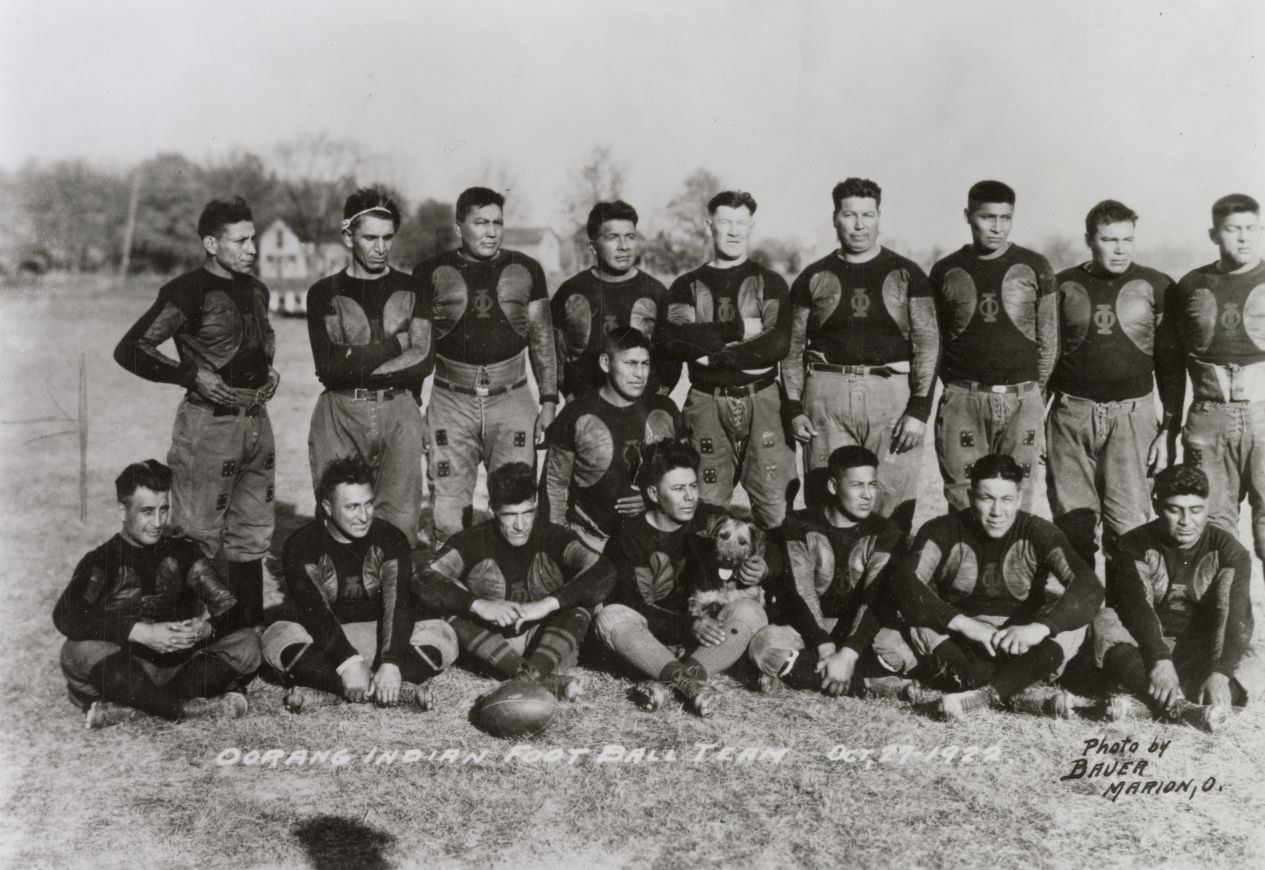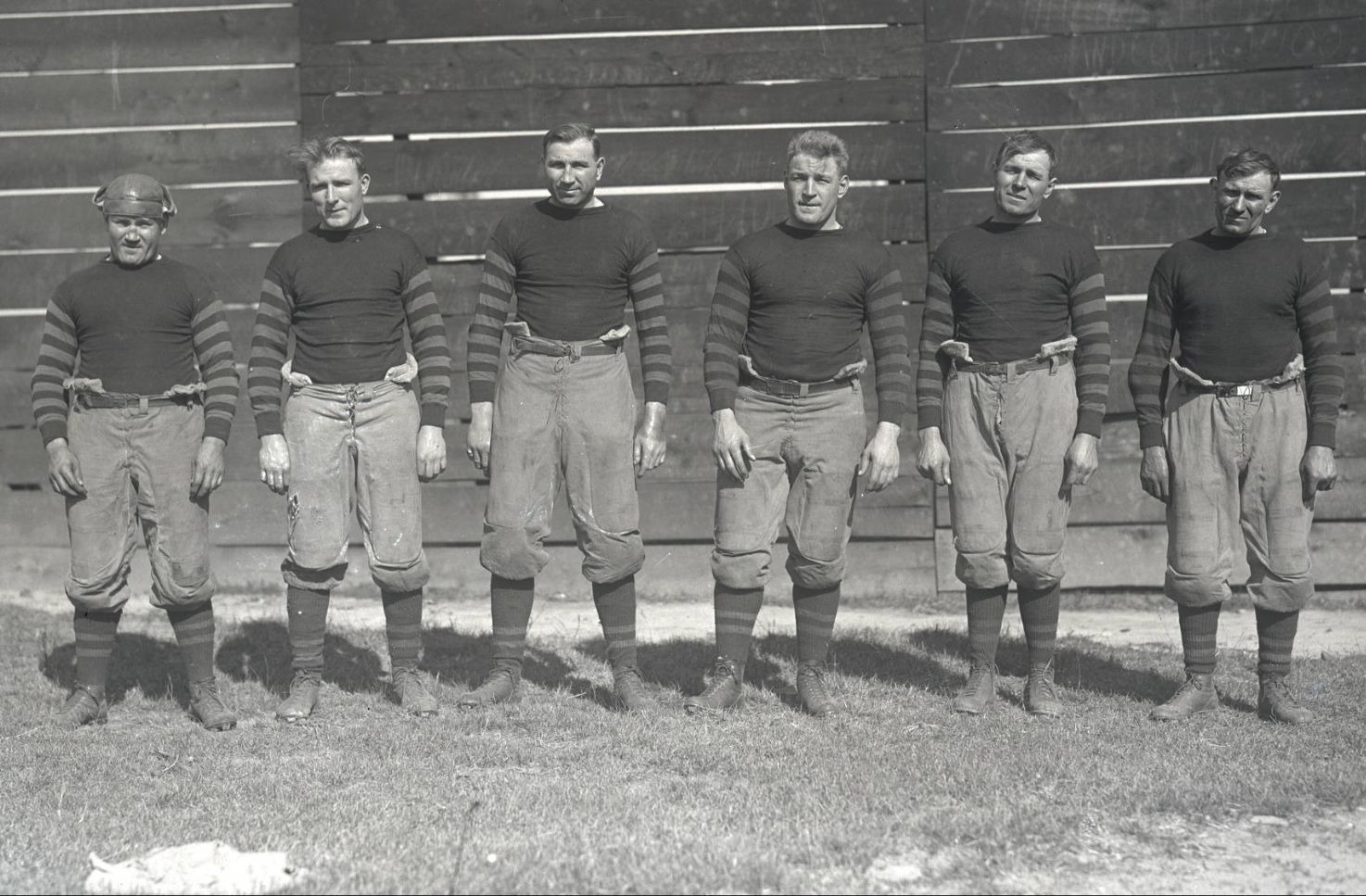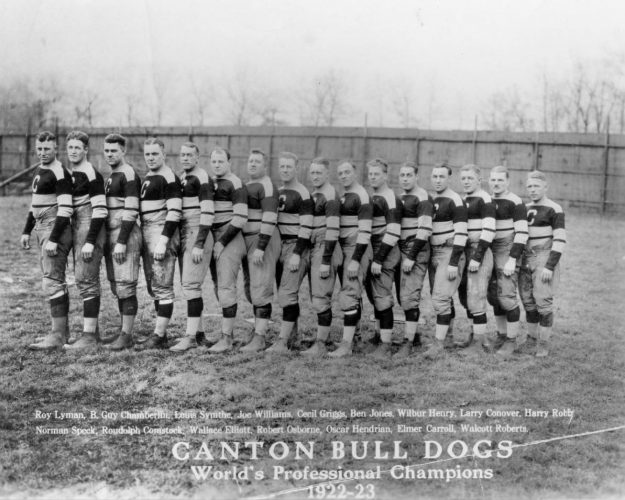100 Years of the NFL

When William “Pudge” Heffelfinger became the first professional football player in 1892 (he was paid $500 to play one game for the Allegheny Athletic Association), the sport of football was still evolving. Over the next several years scoring rules were refined, the forward pass was legalized, and teams transitioned from amateur players to paid professionals.
The early pro teams were located mainly in small cities in Pennsylvania and the Midwest, where multiple leagues sprang up. The Ohio League, where Olympic champion Jim Thorpe played for the Canton Bulldogs, was one of the most recognized. By 1919, two main “circuits” had developed—one in the Northeast and one in the Midwest. With player salaries skyrocketing, owners thought establishing a national league would reduce poaching from other teams and more evenly distribute talent.

On August 20, 1920, an organizational meeting was held at the Canton Hupmobile dealership of Ralph Hay, who also owned the Bulldogs. Three additional Ohio League teams were represented at the meeting, which ended with the formation of the American Professional Football Conference. A second meeting on September 17, 1920, was attended by representatives of eleven teams from four states, including the Decatur Staleys (now the Chicago Bears) and the Chicago Cardinals (now the Arizona Cardinals, the oldest continuously operating franchise in pro football). The league’s name was changed to the American Professional Football Association, and Jim Thorpe was named its first president while still playing for the Bulldogs. Sports historians consider this meeting to be the birth of the NFL.

In 1921 the league moved its headquarters to Columbus, and in 1922 it officially changed its name to the National Football League. Although college football remained incredibly popular, often drawing crowds as large 100,000, pro football struggled. However, in 1925, college superstar Red Grange joined the Chicago Bears, and the league gradually began to gain respect—and fans. In 1933, league membership reached ten teams, organized into Eastern (Philadelphia Eagles, Brooklyn Dodgers, New York Giants, Boston Redskins, Pittsburgh Pirates) and Western (Chicago Bears, Portsmouth Spartans, Chicago Cardinals, Green Bay Packers, Cincinnati Reds) Divisions. (At that time it was common for NFL teams to use the same name as their city’s existing Major League Baseball team.) Later that year, the two division winners met in the first official NFL championship game.
More “firsts” followed: the first annual draft of college players in 1936; the first televised game in 1939; and, with the relocation of the Cleveland Rams to Los Angeles, the first big-league sports franchise on the West Coast in 1945. Nearly 26,000 individuals have competed in pro football during the past century, helping to make it the most popular spectator sport in the U.S. Here’s to another 100 years!
Thank you to Stephanie Michaels, Research and Catalog Services Librarian at theState Library of Ohio, for this week’s post!
Ohio Memory is celebrating 20 years! Visit our blog all year long to learn more about our program, partners and collections.



Leave a Reply
You must be logged in to post a comment.